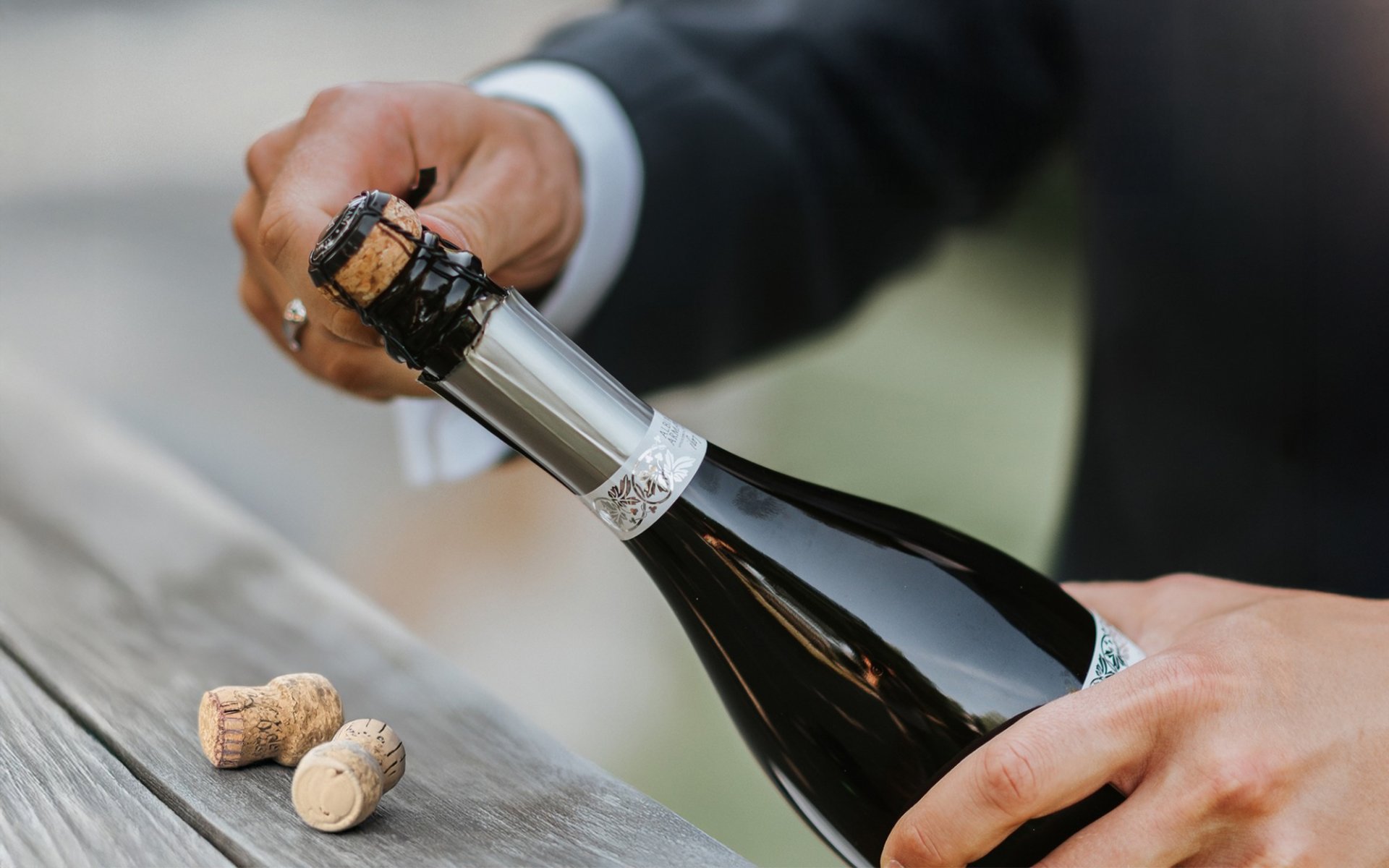Unlocking Champagne

Champagne has long been a symbol of celebration and luxury, from European royal courts to parties worldwide. In recent years, Thailand has also begun to adopt the European tradition of opening champagne for various celebrations, such as weddings, festivals, Christmas, and New Year's Eve.
However, the familiar image of champagne being opened with a high-flying cork and overflowing bubbles might be misleading. In reality, the correct way to open champagne is not as extravagant as it appears. And there are certain rules worth knowing to fully appreciate its true taste and enjoy those special moments. As the New Year approaches, Rimping is delighted to share tips on how to open, store, and enjoy champagne in various ways.
1. Champagne Doesn't Always Need to Be Served in Flutes
It's a widespread belief that champagne tastes better when served in slender flute glasses. However, did you know that it can taste just as good when enjoyed in a tulip-shaped glass? While flutes showcase the bubbles beautifully, their narrow shape can restrict the champagne's aroma and flavor. Tulip glasses, with their wider bowl and tapered rim, allow the aromas to fully develop and provide a better tasting experience. So, serving champagne doesn't always have to be in a flute.
2. Vintage Champagne Isn't Always Superior
While Vintage Champagne (indicated by a production year) is often perceived as luxurious and of higher quality, the truth is that non-vintage champagnes can be equally impressive. Most common champagnes blend wines from multiple years to achieve a consistent and stable flavor profile. Vintage champagnes, on the other hand, are made from grapes of a single year, meaning their taste depends on that year's weather conditions and grape quality, resulting in a unique character. Rimping suggests that you don't judge champagne solely by the term "vintage," as non-vintage champagnes can also be of excellent quality and delicious, often possessing complexity and unique characteristics comparable to their vintage counterparts.
3. A Spoon Won't Preserve Bubbles in an Opened Bottle
The old trick of putting a spoon into an opened champagne bottle to preserve its bubbles is nothing more than an old wives' tale. A spoon possesses no magical properties to keep the fizz intact. Therefore, if you wish to preserve leftover champagne after opening, Rimping recommends using a special champagne stopper. Simply seal the bottle with the stopper and store it in the refrigerator, and your champagne will remain fresh and bubbly for another 1-2 days.
4. Good Champagne Doesn't Always Have to Be Expensive
While expensive champagne is often equated with high quality, there are many excellent quality champagnes available at reasonable prices. Non-vintage champagnes, for instance, can taste just as good but come at a more affordable price point. Therefore, Rimping encourages you to explore various champagne options and not let the price be the sole determinant. Keep an open mind when searching; you might discover a delightful champagne that's more accessible than you think.
5. The Myth of Storing Champagne Bottles Upright
A common misconception is that champagne bottles should be stored upright. However, champagne, like other wines, should be stored horizontally to keep the cork in contact with the wine and maintain its seal. Doing so prevents oxidation and helps prolong the champagne's lifespan.
6. Champagne Isn't Just for Special Occasions
Although champagne symbolizes celebrations, it's actually a delicious beverage that pairs well with many occasions, whether it's a small party, a meal with friends, or even a solo moment of relaxation. Champagne is always a good choice. Its versatility in flavors allows it to complement various foods and atmospheres. Therefore, champagne is a drink you can enjoy anytime; there's no need to wait for a special occasion.
7. The Correct Way to Open Champagne
While the common image of opening champagne involves a high-flying cork and overflowing bubbles, many experts agree that spraying champagne everywhere is not recommended. Besides being wasteful, using excessive force to open the bottle can cause the cork to strike others or surrounding objects. Furthermore, it causes the bubbles in the bottle to dissipate quickly, affecting the champagne's tastea regrettable outcome for a champagne that took years to produce.
To open champagne correctly, Rimping recommends these simple steps
- Remove the foil covering the cork and slightly loosen the wire cage to prevent the cork from prematurely popping out.
- Point the bottle away from yourself and others.
- Hold the bottle firmly at a 45-degree angle.
- Gently twist the bottle (not the cork) using your wrist, while holding the cork firmly with your other hand. Emphasize: Twist the bottle, not the cork, as twisting the cork might cause it to break inside the bottle neck.
- After a few twists, you'll feel the pressure in the bottle gradually releasing through the opening. This method helps you control the cork's release and prevents a loud pop.
- Then, slowly tilt the glass as you pour the champagne to prevent excessive foaming.
However, Rimping understands that during moments of celebration, you might want to hear the sound of the champagne opening to enhance the festive atmosphere. In such cases, we recommend chilling the champagne thoroughly to reduce the pressure in the bottle and opening it carefully, without pointing the bottle at anyone.


